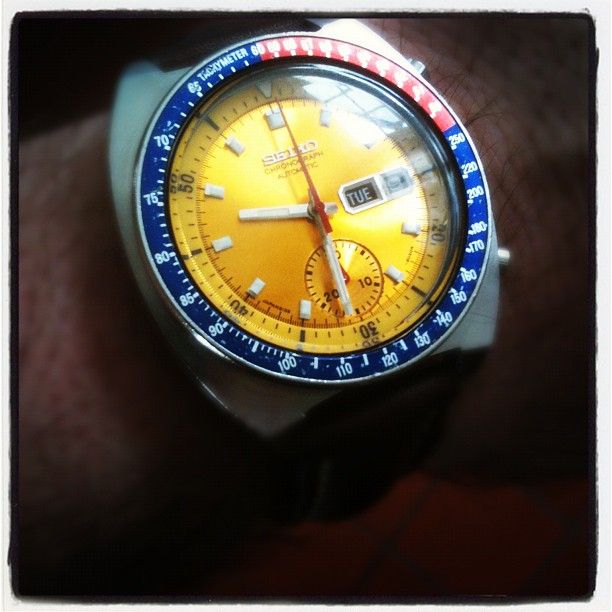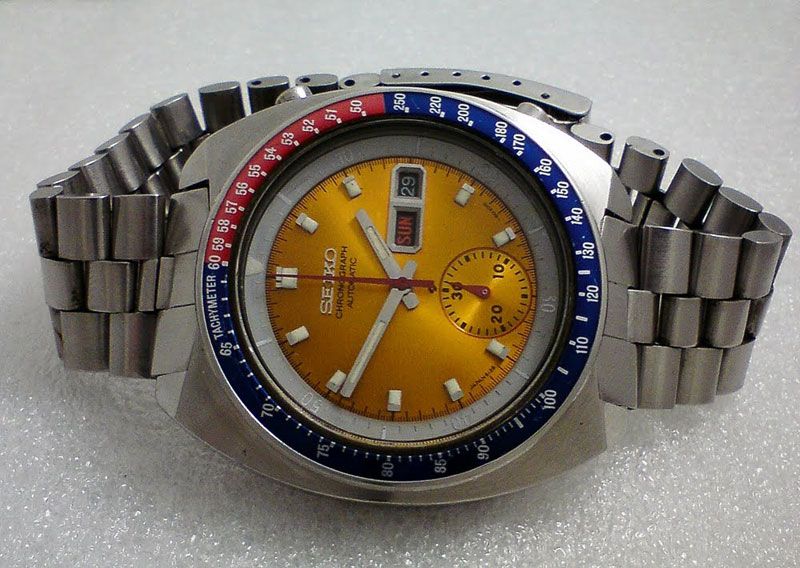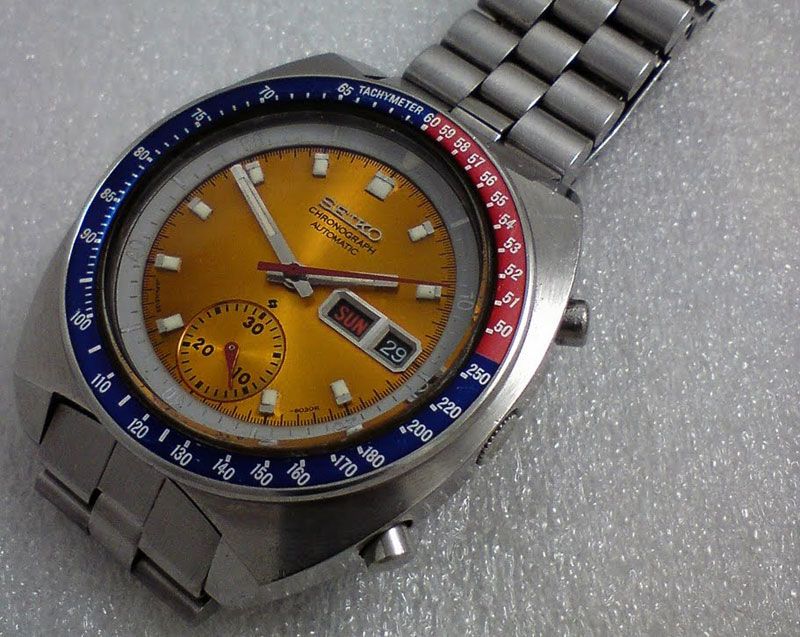Revisiting An Icon – The Seiko Speedtimer

Our new contributor, Evan Yueng, has a real fetish for the first automatic chronograph. Like me! Although I focus mainly on the outcome of the cooperation between Heuer, Breitling, Buren and Dubois-Depraz, Evan focusses on Seiko’s first automatic chronograph, the Speedtimer.
It’s been years since the craze for the Rolex Daytona has began, and even more years since the advent of automatic chronographs themselves. Back in the 70s, the Heuers and the El Primeros have taken a foothold of the entire sports watch industry by racing to become the first to produce an automatic chronograph. It’s been a feat that has been debated for so long on who really won, but in the background of all of this, another manufacturer, quietly created one to call their own – the Seiko 6139 or what others would like to call the Speedtimer.

It is only a few weeks ago that I happen to snag one of these vintage chronographs in superb condition. Surprisingly, for a watch made back in the early 70s, this piece is not small and wears larger than most watches made in that same era. This is probably because of the large “UFO” designed case that makes the piece wear larger than normal. The Seiko 6139 chronograph did came in a variety of dial and inner bezel color combinations. This particular version is in fact the 6139-6002 or the “Pogue”, the very same piece that Col. William Pogue worn in his Skylab Missions (check out this link!!), becoming the first automatic chronograph worn in Space.
The 6139s came in a wide variety of dials, the 6139-6002 piece pictured in this article is in fact the international version of the piece.
 The Japanese domestic models offers a different touch, by having the “Seiko Speedtimer” label below the 12 o’clock instead of the standard “Chronograph Automatic”. It is most certain that in the collector’s scene on vintage Seiko, the Speedtimer dials are more sought after because of its exclusivity to the Japanese market. It is also one of the reason why the piece was called Speedtimer in the first place. For obvious reasons, the piece pictured is not sporting the Speedtimer dial but rather the standard international version of it similar to the piece worn by Pogue.
The Japanese domestic models offers a different touch, by having the “Seiko Speedtimer” label below the 12 o’clock instead of the standard “Chronograph Automatic”. It is most certain that in the collector’s scene on vintage Seiko, the Speedtimer dials are more sought after because of its exclusivity to the Japanese market. It is also one of the reason why the piece was called Speedtimer in the first place. For obvious reasons, the piece pictured is not sporting the Speedtimer dial but rather the standard international version of it similar to the piece worn by Pogue.
For any Seiko collectors, or watch collectors for that matter, the 6139 in itself is a piece worthy of praise. As the company’s first venture into automatic chronograph, Seiko did it with flair. Sporting a famous Red-Blue bezel, popularize by the Rolex GMT-Master, with a contrasting color of the chapter ring (inner bezel) with the sunburst dial, this piece is flashiness labeled all throughout.

With all those color combinations, you might be forgetting that this piece here is a true in-house manufactured chronograph with a single sub-dial at the 6 o’clock position measuring up to 30 minutes. It is a true engineering feat for Seiko even until now. However, Seiko stopped producing the 6139 back in the early 80s, despite its success. It is because of this that the 6139 have developed a cult following among Seiko fans worldwide and has become a piece of history worth owning. A good piece can be had at around 150-200 (USD) mark is insane, adding the history that goes with it, the 6139 offers one of the best mechanical chronograph piece from the early days, giving the best bang for the buck money can buy.

Be wary though of pieces that has been severely overhauled, and with so many aftermarket parts available on the market. It’s hard to find one in full original condition. The folks over at WUS (Watch U Seek) have managed to compile in great detail on how to buy a Seiko 6139, so in case you’re in the market for one, might be a good idea to head on over. Vintage Seiko are a plenty, but buying one in perfectly preserved condition is the thrill behind it and once you’re bitten by the “vintage bug”, don’t be surprise that you’ll soon be scouring for more.
The second photo is from Dan. Check out his #WOMW blog: http://womw.danfast.com
This article is written by Evan Yueng, contributing writer for Monochrome Watches.




1 response
This Seiko Speedtimer also features on an episode of Columbo, Candidate for Crime (1973) where the rumpled detective bashes the watch against a metal scaffolding to prove it’s ‘unbreakable.’ It’s the blue dial version.